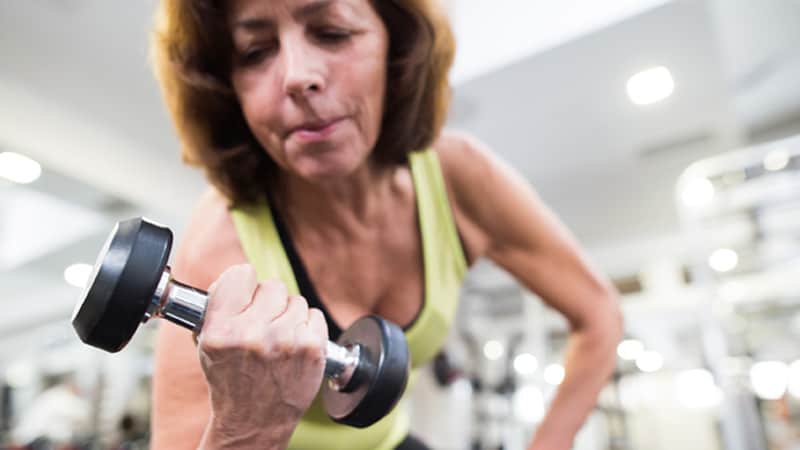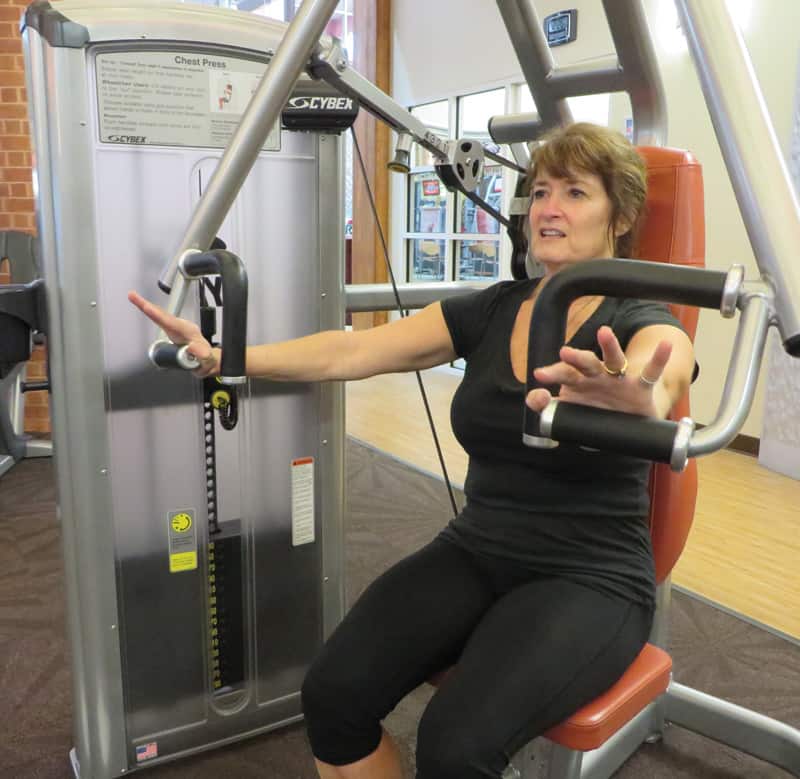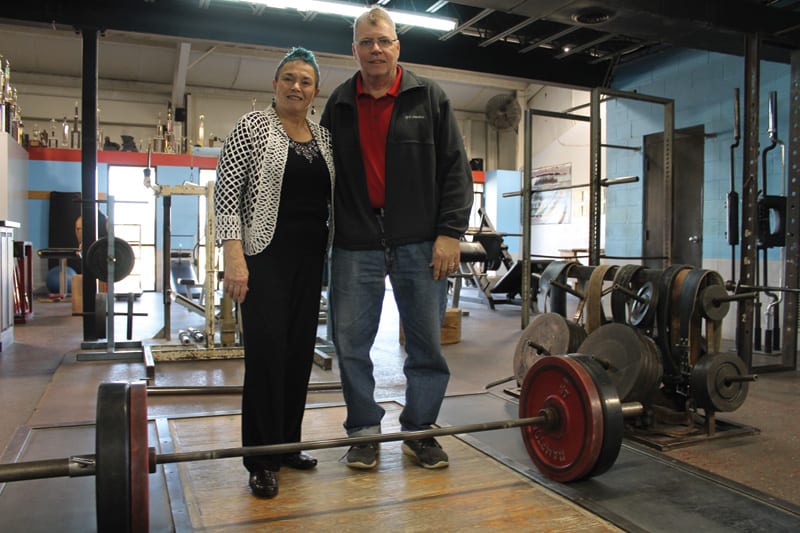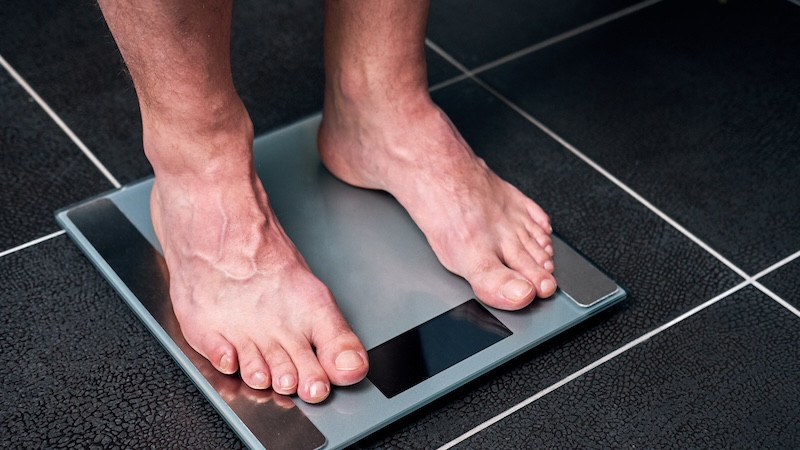Popeye Had It Right
But strength training goes beyond big biceps and besting Brutus

Going for the gold?
Or just interested in staving off the weakening of bones and muscles that comes with advancing age?
Whatever your target, metro Richmond organizations offer a variety of strength training programs for boomers and seniors.
The local YMCA, Gold’s Gym, ACAC and American Family Fitness all feature some form of strength training for older folks. Often it is part of a comprehensive fitness regimen that includes cardiovascular fitness and strength.
“Seniors tend to stay away from weight-bearing exercises,” said Laura Rothenbach, a fitness trainer and assistant general manager of the American Family Fitness gym in Midlothian. However, she said, “It’s what they need for bone density, for mobility.”
For women especially, strength training fortifies bones and helps guard against the onset of osteoporosis, she said.
Weight-bearing exercises can include use of barbells and dumbbells, resistance machines or simply body weight (pushups and pullups, for instance.)
AmFamFit’s “Active” sessions feature an hour of cardio, strength, balance and flexibility exercises that include adjustable dumbbells, weight plates and body weight.

The area’s YMCA branches offer a program called Gentle Fusion, a mix of low-impact aerobics and exercises to increase muscular strength and range of motion. These classes are extremely popular with seniors, said Katelyn Chisholm, associate director of wellness at the Midlothian Family YMCA.
A key for seniors is to focus on strength exercises that mimic the challenges of everyday life, said Zach Pedersen, fitness manager at Gold’s Gym in Midlothian.
“How often in our daily lives do we have to push 100 pounds? Very rarely, right? So why do we want to train our bodies to do that?” Pedersen asked.
“Especially in seniors, we want to train functional movement patterns. We want to get out of chairs better. We want to walk stairs, have more energy, these kinds of things.
“Free weights, cables, body weight training, core training, these things are functional movement patterns,” Pedersen said. “They allow a greater range of motion for your body, and we can actually mimic these lifestyle patterns.”
BEYOND THE BASICS
For those with heavier ambitions, such as power lifter Linda Odum (see accompanying article), weightlifting meccas such as Mike’s Olympic Gym in Mechanicsville and Walker’s Gym in Hopewell offer personalized training regimens aimed at maximum output.
At Mike’s Gym, owner Mike Craven constantly tests the VO2 (Volume of Oxygen) of his athletes and emphasizes the importance of mitochondria – cell organelles that contain enzymes responsible for the conversion of food to usable energy.
Sports journalist Fred Jeter, who has covered local athletics for four decades for a number of publications, says that when it comes to weightlifting, “Mike is the smartest guy I’ve ever met.”
Most seniors aiming to stay healthy can satisfy their need for stronger bones and muscles at a lower level – even at home.
The concept behind strength training is to perform exercises at a level close to your maximum capacity.
“You work out with a weight that’s just heavy enough so you can lift it eight times in good form before you have to rest,” said Miriam E. Nelson, author of Strong Women Stay Young. “As you get stronger, and that weight is no longer challenging enough, you increase the load.”
Nelson says strength training has multiple benefits for young and old alike: In addition to halting bone loss and preventing bone fractures, it can improve balance and flexibility, trim and tighten the body, help control weight and restore energy.
The U.S. Department of Health and Human Services says adults need at least 2½ hours a week of moderate-intensity aerobic activity (for example, brisk walking) and muscle-strengthening activities that work all major muscle groups (legs, hips, back, abdomen, chest, shoulders and arms) two or more days a week.
“As an older adult,” the HHS website says, “regular physical activity is one of the most important things you can do for your health.”

A LIVING TESTIMONY
Linda Odum discovered the power of strength training
By Ed Kelleher
Linda Odum is a big proponent of strength training for seniors, and with good reason.
It might have saved her life. It most certainly saved her from years in a nursing home.
Odum, 72, is a nationally ranked weightlifter and a fifth-degree black belt in tae kwon do. She lives in Lancaster County but makes the hour-and-45-minute commute to Mechanicsville three times a week to train at Mike’s Olympic Gym, a local weightlifting mecca run by Mike Craven.
It was during one of those motorcycle commutes, in August 2010, that Odum nearly met her maker. She was approaching a curve on Pole Green Road in Hanover County.
“I honestly don’t think the driver ever saw me,” Odum said, “because when the driver rounded the curve I could see the top of the driver’s head. So whatever was going on was going on in the driver’s lap.”
Odum had only a millisecond to respond.
She veered toward a ditch, but hit a culvert. “And that bike sat up like this,” she said, motioning vertically. “The rear went up and thankfully threw me over the windshield instead of shearing my face off.
“I ended up with a collapsed right lung, fractured ribs and fractured sternum. My right shoulder was fractured from my collarbone all the way through it. I had compresssion fractures in C11-C12, and burst fractures in L1 and L2.” And a shattered spleen.
The situation looked bleak.
At Virginia Commonwealth University’s Medical College of Virginia, “My sister and my spouse were standing on this side of the bed, and the doctor was here, and they were talking over me.” The attending neurosurgeon told them to find a nursing home.
At age 65, and with the extent of her injuries, the doctor said, “She’s not coming back.”
“And my mind was saying, uh-oh, uh-oh, uh-oh, this is not the way this is gonna be.
“And as though they had rehearsed it, Linda and Leslie said in unison, ‘Doctor , you have no idea who you’re talking to.’
“So as it turned out, I obviously did not go to a nursing home for the rest of my life. I was in a turtle shell for (only) three months, because I took my PT very seriously. I walked, I got rid of the cane, I did come back.”
At her first follow-up appointment with the doctor, Odum said she was able to sit cross-legged, erect and without a cane. The doctor turned to his nurse and said, “Forget what I said to you before she came in.”
In January 2011, five months after the crash, she was cleared to resume normal activity – including tae kwon do and weightlifting.
The doctors credited her quick recovery to her determination. “But they also said the saving grace is the core strength that [I] got through Mike’s Gym. And the flexibility that comes with squats and deadlifts, because you have to get down to them. And also the flexibility that comes with tae kwon do,” Odum said.
“So I had an advantage that most people my age would not necessarily have had, and that was core strength and flexibility.”
Ed Kelleher is a retired Richmond Times-Dispatch deputy news editor who is using this Boomer assignment as inspiration to get back to the gym.
EASY AS PIE
Strength training needn’t be complicated
By Boomer staff
You can achieve a strong, healthy base with simple routines. Dr. Miriam Nelson provides a two-day-a-week program beginning with eight easy exercises that can be performed at home with just a chair, ankle weights and small dumbbells. She adds suggestions for maintaining an individualized plan, adding new exercises, staying on track and taking your workout to a gym. Nelson’s program is available in Strong Women Stay Young (with a chapter emphasizing the importance of ongoing strength training for men, too).
For guidance in developing your tailored program, reach out to your primary care physician or a qualified trainer at a local gym. Always consult your physician before beginning any exercise program.


